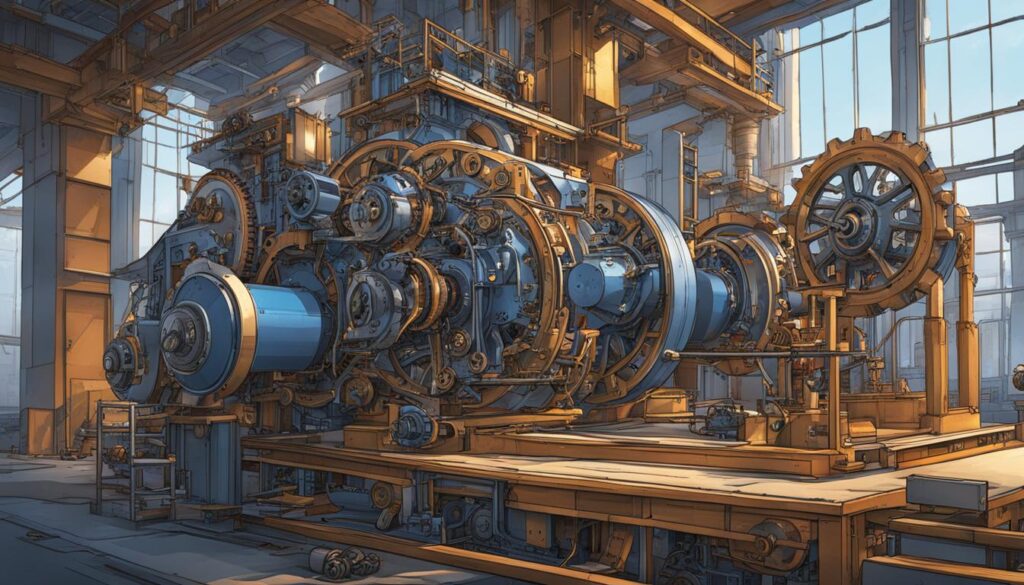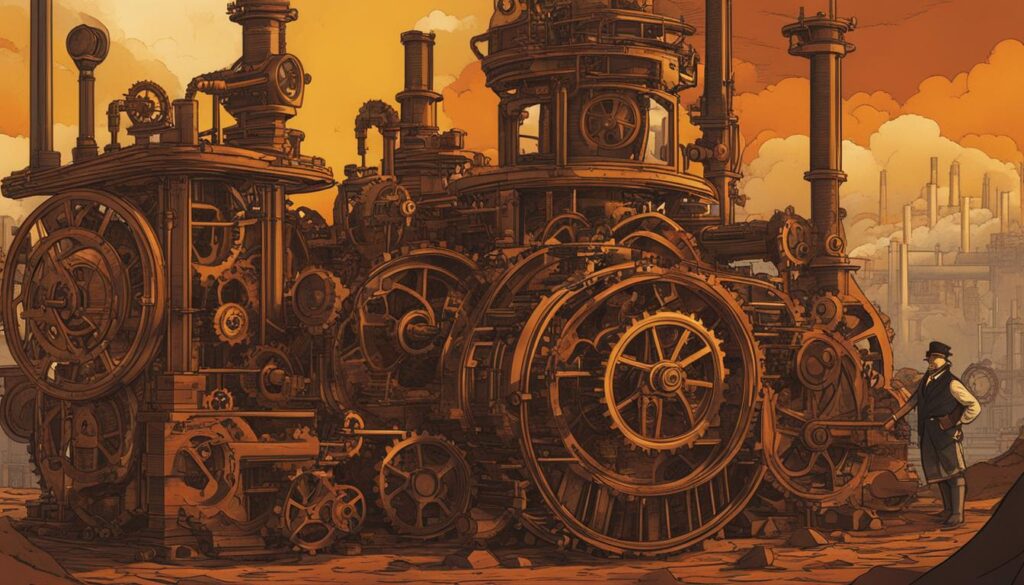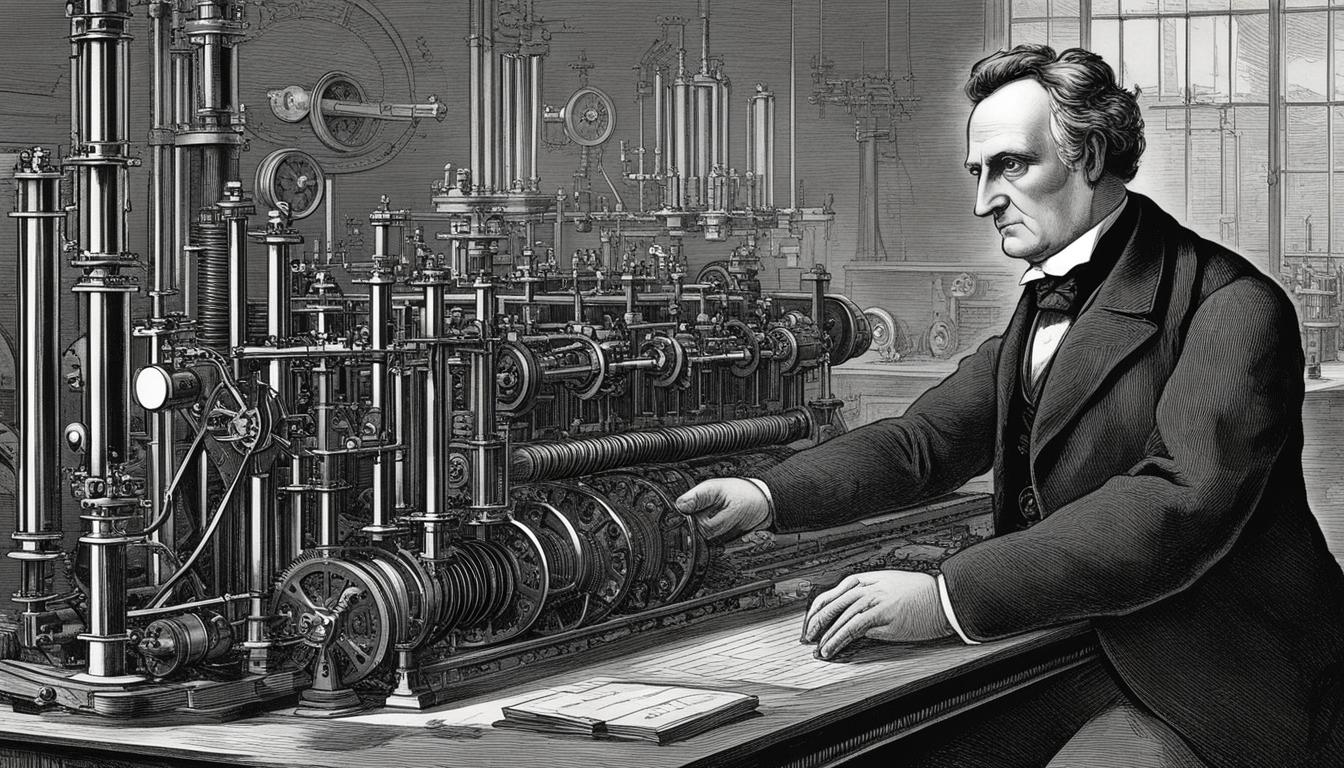Are you curious about the history of computers and the pioneers who paved the way for modern technology? Look no further than “The Difference Engine” by Doron Swade. This book summary explores Charles Babbage’s journey to build the first computer, known as the Difference Engine. Babbage’s quest for innovation paved the way for modern computing and his legacy still resonates in the digital age. Join us as we delve into the history of computing and explore the life and work of the legendary Charles Babbage.
Introduction to Charles Babbage
Charles Babbage was an English mathematician, philosopher, inventor, and mechanical engineer who is credited with designing the first mechanical computer. Born on December 26, 1791, in London, Babbage was the son of a wealthy banker. He attended Trinity College in Cambridge and later became a professor of mathematics at the same institution. Babbage’s fascination with machines and their ability to perform complex calculations led him to develop his most famous invention, the Difference Engine.
The Difference Engine was the first mechanical computer designed to automatically calculate polynomial functions, eliminating the need for manual calculations. Babbage’s passion for automation and his relentless pursuit of precision and accuracy laid the foundation for modern computing as we know it today.
“The whole of arithmetic now appeared within the grasp of mechanism.” – Charles Babbage
Contributions to the Field of Computing
Babbage’s contributions to the field of computing are immeasurable. He not only designed the first mechanical computer but also introduced several concepts that paved the way for modern computing. Babbage proposed the idea of a programmable computer that could perform different tasks based on instructions stored in its memory. He also suggested the use of punch cards to input data and store instructions, which became the foundation for early computing devices.
Babbage’s Legacy
Babbage passed away in 1871, but his legacy lives on. His designs and inventions inspired a new generation of inventors and engineers who continued to refine his concepts and bring them to life. Today, Babbage is remembered as a pioneer in the field of computing and a visionary who envisioned a world where machines could perform complex calculations and automate mundane tasks.
The Concept of the Difference Engine
Charles Babbage’s Difference Engine was a mechanical device designed to perform mathematical calculations automatically. This revolutionary invention was based on the principle of finite differences, which involves computing each increment of a mathematical function, starting from its initial value.
The Difference Engine aimed to eliminate errors that often occurred in manual calculations, and it could produce accurate results faster than any human could. The device consisted of a series of gear wheels, rods, and levers that performed the mathematical operations.
The Significance of the Difference Engine
The Difference Engine was significant in the development of computers because it was the first machine designed explicitly for mathematical calculations. Babbage’s work laid the foundation for the development of modern computers.
The Difference Engine was a landmark invention that opened up new possibilities for the automation of mathematical and scientific calculations. It demonstrated the power of machines in performing complex computations, paving the way for the development of more advanced computing devices.
“The whole of arithmetic now appeared within the grasp of mechanism.” – Charles Babbage, on the Difference Engine.
Babbage’s Struggles and Challenges
Charles Babbage faced numerous struggles and challenges during the daunting task of building the first computer. One significant challenge was the lack of funding and support from the British government, which forced Babbage to rely on private funding. This financial strain also resulted in frequent setbacks and delays in the construction of the Difference Engine.
Babbage’s meticulous attention to detail and high standards for craftsmanship further added to the challenges he faced. He often spent excessive amounts of time and resources to perfect each mechanical part, resulting in significant delays and an extended timeline for the completion of the machine.
Moreover, the engineering capabilities of the time period posed a significant obstacle in Babbage’s quest to build the first computer. The technology and techniques required to construct the complex mechanical parts did not yet exist and had to be developed from scratch. This lack of technological advancements resulted in numerous design flaws and mechanical failures that Babbage had to solve.
“The whole of the mechanical part of the engine is in its nature subject to derangement, from the wear and tear of its working parts, from rust, want of oil or cleanliness, from a disarrangement of parts, from accident to the delicate and complicated parts, &c. &c.” – Charles Babbage, on the intricacy of the mechanical parts of the Difference Engine
The Collaborative Efforts of Babbage and Ada Lovelace
While Charles Babbage may have conceived the concept of the Difference Engine and Analytical Engine, Ada Lovelace played a crucial role in advancing the field of early computing. Lovelace, a gifted mathematician and writer, discovered Babbage’s work and became his key collaborator, writing extensive notes and documentation of his inventions.
Although at the time, women were not typically involved in scientific or technological fields, Lovelace defied societal norms and leveraged her knowledge to push for the development of computing. Her contributions included groundbreaking work on programming and algorithms, including the world’s first computer program for Babbage’s Analytical Engine.
The image above showcases Ada Lovelace’s keen intellect and dedication to mathematics, as she is depicted working on a mathematical problem.
Today, Lovelace is celebrated as a pioneer in computer programming and an inspiration to many women in STEM fields. Her partnership with Babbage significantly impacted the early development of computing and helped set the stage for future innovations.
The Difference Engine Project Timeline
Charles Babbage’s quest to build the first computer, the Difference Engine, was a lengthy and arduous process spanning several decades. Here is a timeline of the significant milestones achieved during its development:
| Year | Event |
|---|---|
| 1822 | Charles Babbage proposes the concept of the Difference Engine. |
| 1826 | Babbage receives funding from the British government to build a prototype of the Difference Engine. |
| 1833 | Babbage envisions an even more powerful computing machine, the Analytical Engine. |
| 1837 | Ada Lovelace collaborates with Babbage on the Analytical Engine and writes the first computer program. |
| 1842 | Babbage completes the design for the Difference Engine and begins construction. |
| 1849 | Construction of the Difference Engine is halted due to lack of funding. |
| 1991 | The Science Museum in London builds a working replica of the Difference Engine No. 2 according to Babbage’s original designs. |
The timeline of the Difference Engine project is a testament to Charles Babbage’s dedication to advancing the field of computing. Despite numerous setbacks and challenges, Babbage persevered in his pursuit of building the first computer, laying the foundation for modern computing technologies.
Technical Challenges of Building the First Computer
Building the world’s first computer was no small feat. Charles Babbage’s work on the Difference Engine presented several technical challenges during its construction, including:
- The need for precise mechanical components that could function with the necessary accuracy
- The complexity of the design and the challenge of ensuring that every component fit together perfectly
- The difficulty of sourcing the materials required for the construction of the machine
Despite these challenges, Babbage pressed on with the project, determined to see it through to completion. He developed innovative solutions to overcome the technical difficulties faced during the construction of the Difference Engine. For example, Babbage designed specialized tools to create the precise components he needed. Additionally, he invented a new type of metal alloy that was less prone to deformation, enabling the machine to function with greater accuracy.
“I am inclined to believe that, beyond the mere gains in speed, accuracy, and economy, the engine will have an altogether new influence upon our future,” Babbage wrote of his invention.
The technical challenges Babbage faced while building the first computer paved the way for future innovations in the field of computing. It was his tireless dedication and innovative problem-solving techniques that laid the foundation for the technological advancements of the digital age.

Impact and Legacy of the Difference Engine
The invention of the Difference Engine by Charles Babbage had a profound impact on the field of computing. Although Babbage was never able to complete his invention during his lifetime, his work laid the foundation for modern computing systems.
| Impact | Legacy |
|---|---|
| Revolutionized the Development of Computers: The Difference Engine provided a new way of thinking about computing, and set the stage for the development of modern computers. | Inspired the Development of New Technologies: The Difference Engine’s influence can be seen in modern technologies ranging from calculators to supercomputers. |
| Pioneered the Concept of Computer Programming: Babbage’s work on the Difference Engine represents one of the earliest instances of the concept of computer programming. | Championed the Importance of Precision in Computing: Babbage’s work emphasized the importance of precision in computing, a principle that continues to guide modern computing practices. |
| Transformed Scientific Research and Discovery: The Difference Engine allowed scientists to carry out complex computations and provided new insights into natural phenomena. | Influenced the Development of Analytical Algorithms: The development of the Difference Engine was closely tied to the creation of analytical algorithms, providing a new paradigm for problem-solving in computing. |
The legacy of the Difference Engine continues to be felt in the modern world, as the principles embodied in Babbage’s work continue to guide the development of new technologies.
The Difference Engine’s Influence on Modern Computing
The Difference Engine, designed by Charles Babbage in the early 19th century, may not have been fully constructed during his lifetime, but it remains a critical milestone in the evolution of modern computing. Babbage’s visionary ideas and concepts have had a lasting impact on today’s computer systems and the development of new technologies.
One of the most significant contributions of the Difference Engine was its influence on the development of the first general-purpose computer, the Analytical Engine. Babbage’s work on the Difference Engine laid the groundwork for the Analytical Engine, which incorporated several innovative features including punched cards and the ability to perform arithmetic operations.
The use of punched cards became a defining characteristic of computing in the early 20th century and was utilized by several technological advancements that followed. Additionally, the work of Ada Lovelace on the Analytical Engine led to the creation of the world’s first computer program, a significant feat in the evolution of computing.
The ideas and principles that Babbage pioneered with the Difference Engine continue to influence modern computing technologies. The development of modern computing systems has been heavily influenced by Babbage’s work on algorithms, data structures, and the concept of stored memory. These crucial aspects of modern computing systems can be directly traced back to the Difference Engine project.
“The foundations that Babbage laid with the Difference Engine serve as a testament to the power of visionary thinking and the enduring impact that one’s ideas and concepts can have on the world.”
Critical Analysis of “The Difference Engine”
While “The Difference Engine” by Doron Swade provides a comprehensive account of Charles Babbage’s journey to invent the first computer, there are some criticisms to be made. One issue is that the book overlooks the contributions of other key figures in early computing, such as Ada Lovelace. Additionally, some critics have argued that the book presents an overly simplified and idealized version of Babbage’s character and struggles.

| Strengths | Weaknesses |
|---|---|
|
|
Overall, “The Difference Engine” provides a valuable overview of Charles Babbage’s journey to create the first computer, but it is important to approach the book with a critical eye.
Relevance of Babbage’s Work in Today’s Digital Age
Charles Babbage’s pioneering work in the field of computing has had a lasting impact on modern technology.
Today’s digital age owes much to Babbage’s original vision for programmable machines that could perform complex calculations. The concepts that he developed over a century ago form the basis of modern computers and the software that runs on them.
While Babbage’s initial design for the Difference Engine was never fully realized, his work paved the way for subsequent generations of inventors and engineers to build upon his ideas and create the advanced computing systems that we rely on today.
The principles of computational thinking that Babbage championed are now fundamental to many areas of modern life, from data processing and artificial intelligence to communication and entertainment.
As we continue to move towards an increasingly digital future, Charles Babbage’s legacy remains as relevant as ever. His vision for a machine that could perform complex calculations with speed and accuracy has been fully realized, and his impact on the world of technology cannot be overstated.
Conclusion
In conclusion, “The Difference Engine” by Doron Swade offers a fascinating exploration of Charles Babbage’s quest to build the first computer. Through the book, we have gained insight into the challenges and obstacles faced by Babbage in his pursuit of this ground-breaking invention. We have also learned about the collaborative efforts of Babbage and Ada Lovelace and the significant impact of their work on the development of early computing.
Furthermore, the book also provides a detailed project timeline, allowing us to trace the evolution of the Difference Engine and its lasting influence on the field of computing. We have analyzed the technical challenges faced by Babbage and his team and how they were overcome, and evaluated the legacy of the Difference Engine and its role in the development of modern computing.
The critical analysis of “The Difference Engine” has allowed us to examine the portrayal of Babbage’s journey and the impact of his work on today’s digital age. We have assessed the relevance of Babbage’s vision for computing in the current era and discussed his lasting legacy.
In summary, “The Difference Engine” is a must-read for anyone interested in the history of computing and the remarkable journey of Charles Babbage and his quest to build the first computer. It is a testament to the ingenuity and perseverance of a visionary thinker whose work continues to shape the world of technology today.



